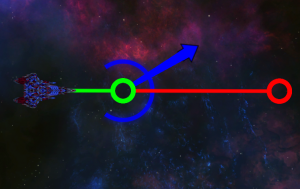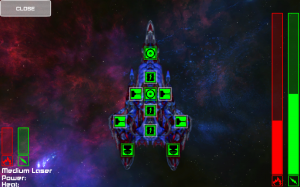Steam is wrapping up their winter holiday sale, with it ends one of my favorite parts of the sale: the trading cards. I love the trading cards because you can sell them and earn enough for a game or two. This year I made roughly $5.75 by selling the trading cards I earned by voting on the Community Choice deals every day.
I sold all of my trading cards as soon as I earned them, figuring that the market value could only go down. But as I was contemplating the end of the sale I began wondering if that was the best strategy for maximizing my earnings from the sale. Would I have been better off holding onto my cards and crafting the badges in hopes of getting a valuable rare item to sell? I decided that I had to know, so I crunched some numbers and came up with some interesting results. I’ll warn you, this is a long post with a lot of numbers an (over) analysis. But if you’re anything like me, and I know I am, then you’ll probably find it very interesting.
If you’re not familiar with Steam or the trading cards, here’s roughly how it works: during the length of the holiday sale certain actions will earn you trading cards. There are ten different cards, if you collect all of them you can redeem them for a ‘Snow Globe’ badge, along with the badge you get a free promotional item randomly chosen from 59 items spread across ten games. These are items you can use in game, and give you status, especially if there aren’t a lot of them. Some of the items are more rare than others, granting more status in the game, and fetching a hire price in the market if you care to sell it.
I did this during my lunch break, as a mental break from programming. My wife laughed at me that a statistical analysis of the trading card economy was a mental break for me. So, all of the numbers listed here are as of 11:30 mountain time on January 2nd, 2014. First I created a table of all of the items you could potentially receive upon crafting a Snow Globe badge, along with how many of them had been crafted. I then divided that number by the sum to figure out how likely you were to receive each item. Additionally I calculated the odds of receiving each item to give a better feel for how rare each item is. So, for example, the chances of getting a Genuine Governer’s Salakot is 1 in 282,015.
[table id=1 /]
With the probability of getting each item, I then looked up the current market price for each item. This was a little bit tricky because there weren’t market prices available for most of the extremely rare items. I’m guessing the people who had them weren’t interested in selling. So, for the items that didn’t have a market price available I multiplied the 2nd most rare item price for the same game by 18. Because the most rare items that did have prices were roughly 18 times more expensive than the second most likely. In the end the rare items were so rare that even large differences in the market price didn’t affect the calculations much. As a final note, Steam has an upper bound on how much you can charge, something like $450. So even though some items have prices higher than $450 you couldn’t actually get their estimated value on the market. Basically I’m saying that you shouldn’t read too much into the prices on the most rare items.
Multiplying the market values by the probability of getting each item gives us a weighted value for that item. Combining all of the item prices weighted by their probabilities gives us an expected value. Essentially the expected value is how much money, on average, you would expect to be able to get for a random item from the list. Pick a random item and sell it, do it a few hundred times and the average price should be pretty close to the expected value. The overall expected value was about $0.25, and this table shows how much each item contributed to that value. As you can see the rare items contributed very little.
[table id=2 /]
So, if your primary interest in the Snow Globes was to make money by selling the items you get from crafting them, like I was, then you would also be interested in the cost of a Snow Globe. I got this information by summing the average market price for each of the cards required to craft a Snow Globe. You’ll notice that there are prices for a standard and a foil globe. There are foil trading cards that are dropped less frequently, I don’t know what the drop rate on them is, if you combine ten foil cards you get a foil Snow Globe. Which, in addition to being shinier, grants you five random items, rather than the one granted by the standard snow globe. The prices have fluctuated over the course of the sale, the prices for the standard cards are about what I was selling my cards for as soon as I got them. The foil cards though have come down in price. I got one foil card at the very beginning of the sale, and I sold it for $3.53, the same foil card today was going for $1.45. So, it seems that selling early/buying late is the way to go. In the end, it would cost you roughly $1.59 to buy the needed cards to get a standard Snow Globe, and $13.78 to get a foil Snow Globe. I also included the expected value of each snow globe. For the standard Globe it is just the expected value of a single item drop, but for the foil Snow Globe it is the expected value of a drop multiplied by five, since you get five items. You’ll notice that the foil Snow Globe costs more than eight times as much as the standard Snow Globe, but is, on average, only worth five times as much. So you’re better of going for the standard Globes.
[table id=4 /]
Finally I have a table showing each item with it’s (estimated) market price. Along with how much you would expect to pay if you were trying to get the item only by crafting either a standard Snow Globe or a foil Snow Globe. It’s pretty clear that it’s much cheaper to get the items from the market.
[table id=5 /]
So, what did my analysis tell me? It told me that my instinct to sell the cards as soon as I got them was right on the money. If your primary goal in collecting cards is to make money, then you are better off selling your cards as soon as you get them. It doesn’t appear that holding onto them improves their value. If you’re into taking big chances though, you could save up your cards and craft them into Snow Globes in an effort to get an item that you could sell for hundreds of dollars. It’s a little like playing the lottery, it could happen, but the chances are extremely low, and on average you’ll lose about $1.25 per globe. Much better to use that money to buy more games that you’ll never get around to playing.
 It’s kind of complicated looking, but it’s just about as simple as I’ve been able to make it. I used to display an image like that with a wall of text explaining what everything did, and it understandably confused people. Then there was the whole ship systems screen:
It’s kind of complicated looking, but it’s just about as simple as I’ve been able to make it. I used to display an image like that with a wall of text explaining what everything did, and it understandably confused people. Then there was the whole ship systems screen: Which again is somewhat intimidating and confusing. So, in the past I would sit someone down, and lean over their shoulder and try to explain everything, and it was understandably overwhelming.
Which again is somewhat intimidating and confusing. So, in the past I would sit someone down, and lean over their shoulder and try to explain everything, and it was understandably overwhelming.